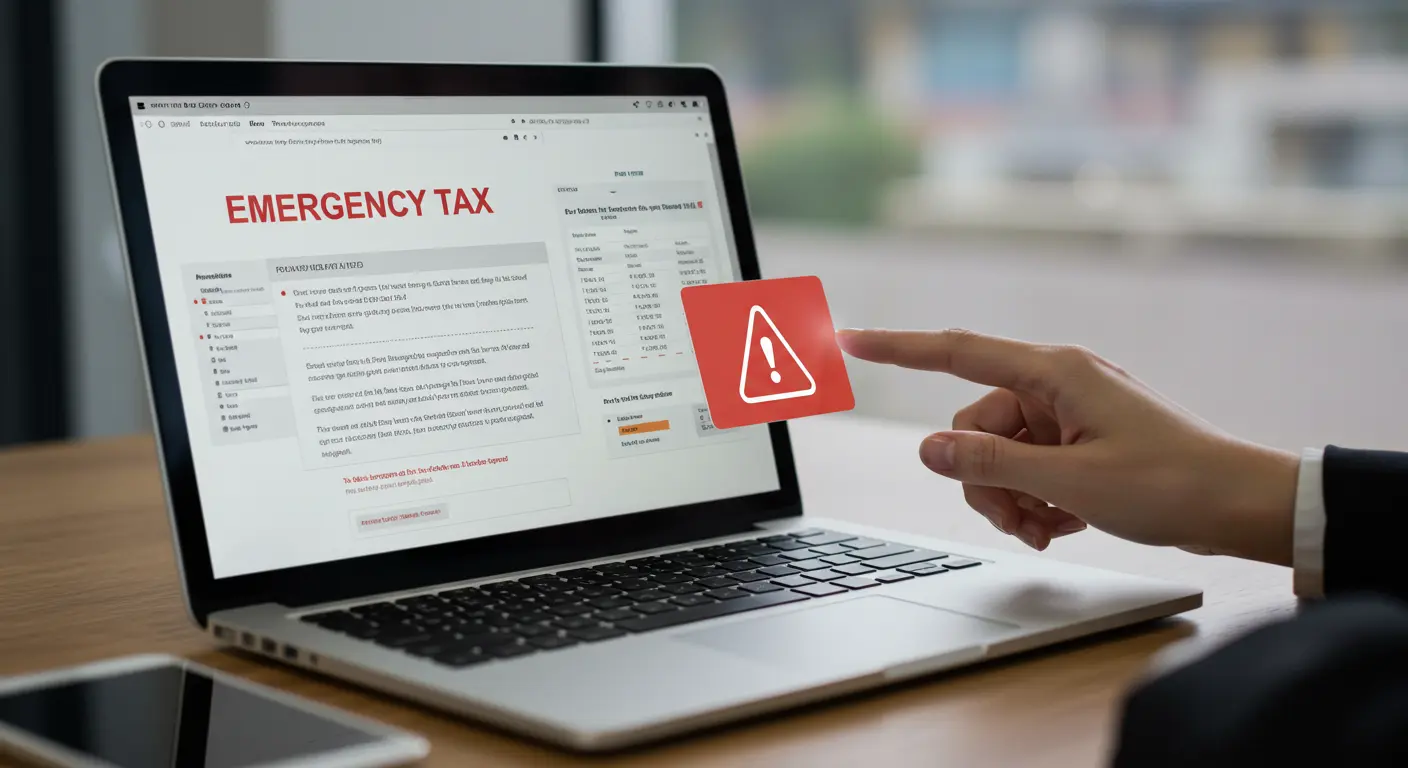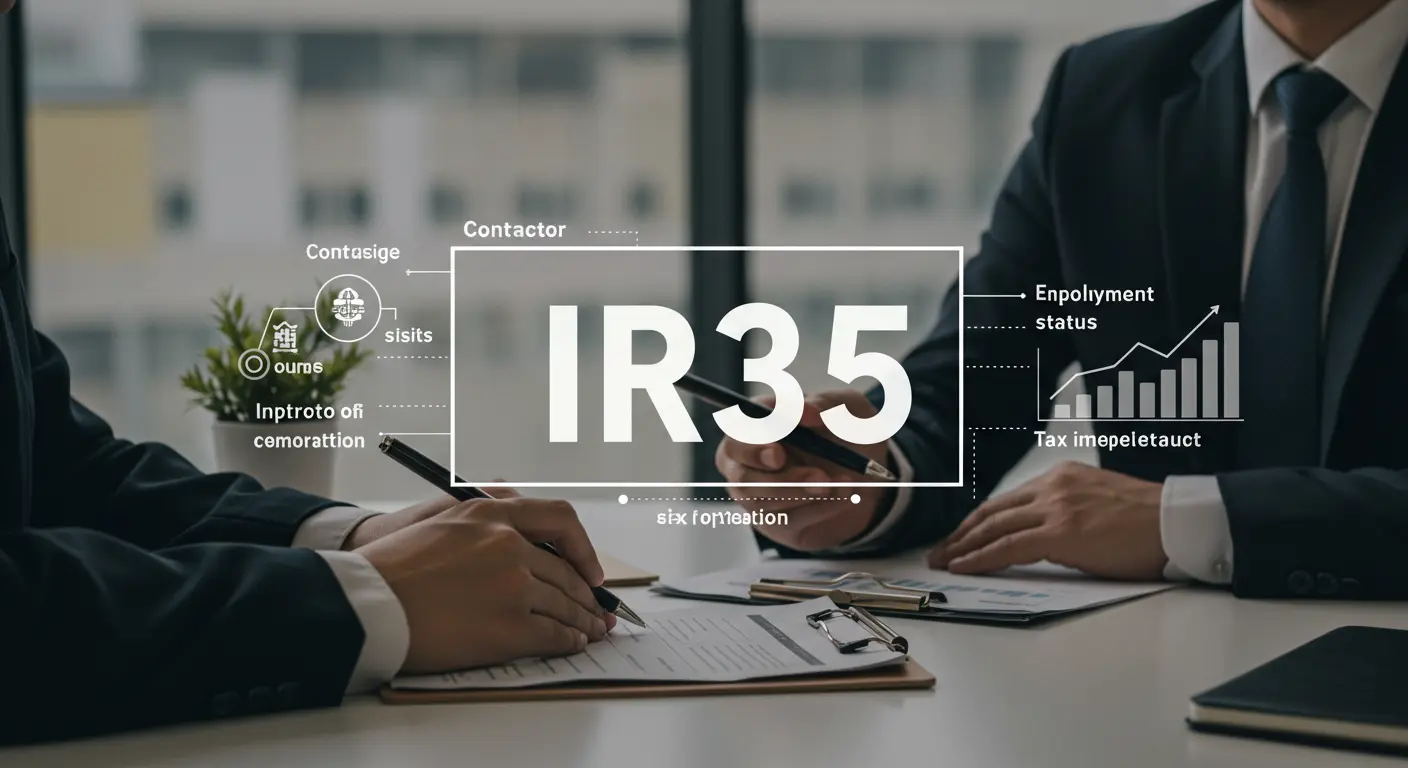What Is Emergency Tax?
Emergency tax is a temporary tax regime that the HMRC uses when all the information about your income or employment history is missing. As long as this remains, you end up paying more in tax than you should have, until you sort out the situation.
This will usually apply to tax codes such as 1257L W1, 1257L M1, BR, or even X on the payslip, which means that you are taxed without any normal personal allowance; thus, every pound earned can be taxed from the start.
Why Do You Get an Emergency Tax?
Emergency tax is applied when HMRC lacks information on your new job or pension situation. It occurs when you were issued a P45 from your previous job, which you should have given to your new employer. If you were not issued a P45 and have failed to fill in the Starter Checklist, your new employer has no way of knowing how much tax-free income you may have.
Additional scenarios include having two jobs, switching from self-employed work to PAYE, starting to receive pension benefits, or receiving other benefits from work. As HMRC does not have full information regarding your status, they just assume that you are not entitled to an allowance. They assume higher rates until they receive updates.
How to Recognize If You are Over-Taxed?
Trawling through the payslip, if tax codes ending with W1, M1, or X, or sinisterly-branded BR pop up, then something is wrong.
There is also the possibility of logging onto your HMRC Personal Tax Account and checking what tax code they currently have assigned to you. If it is wrong, then it is likely that you are overpaid.
| Code | Column 2 |
|---|---|
| 1257L W1/M1/X | You’re getting the standard personal allowance, but it’s calculated weekly/monthly with no adjustment for previous income. |
| BR | All income is taxed at the basic rate (20%) with no personal allowance |
| 0T | No personal allowance applied; all income is taxed |
| D0/D1 | All income is taxed at a higher (40%) or additional (45%) rate |
Can You Claim Back Your Cash?
HMRC allows you to reclaim every penny of overpaid tax. It is possible for you to receive a P800 letter, which indicates how much you have overpaid and how to go about claiming that money back. That isn’t necessary because you can do it straight away on HMRC’s website.
Which Form Is Used for Claims of Tax Recoveries from Pensions?
If you received a withdrawal from the pension and suspect overtaxation, these are the forms:
- Partially taking your pension and intending to take more later? Submit P55.
- If you have taken the whole of your pension and are not working any longer, use form P50Z.
- Taken the whole pension but are still working or have other sources of income? The form will be P53Z.
- These forms are obtained straight from HMRC’s site.
What To Do To Stop Emergency Tax?
You think it might be difficult to stop the emergency tax? Well, it is just the opposite. Simply hand your P45 to your new employer. If you have not got one, instead, ask for the HMRC Starter Checklist and fill that out.
You should also check your tax code online via the HMRC online to make sure it relates to you. If it still seems wrong, call HMRC. Once they have received the right info from you, they will change your tax code, and your payslip will return to normal.
How Much Tax Is Taken?
Twenty percent is deducted from all your earnings. For instance, tax deduction may be two hundred pounds on a thousand pounds of earnings. The tax could be even greater for pension withdrawals, sometimes forty percent. This is much heavier than the regular rates.
Getting Your Tax Refund:
If you’ve paid too much tax, then you can request a return of your funds. At times, you may receive a letter from HMRC called a P800. This letter indicates the amount of the overpaid tax and how to recover it. However, it is not necessary to wait for the letter because you can ask for a refund using the HMRC website yourself. If you received a pension payment, then you would need to complete one of the special forms, like P55, P50Z, or P53Z, to get back your overpayment.
Claiming Refund Steps
The first step is to gather evidence that supports the claim of tax back, such as payslips, P45, or P60. These documents are proof of your income and the tax deducted. Subsequently, visit the HMRC website, where you can access your account by logging in with the appropriate credentials. Make sure to adhere to the mentioned procedures, select a correct refund application, complete it with necessary information, and submit the completed form. Then, wait for a bank credit of the refund that may last for several weeks.
How to stop emergency tax?
The emergency tax can be stopped easily. First, you should provide your P45 from your previous employer to your new employer. In the absence of a P45, you may request the starter checklist from your new employer and fill it out diligently. You may also confirm your tax code with HMRC, where 1257L is usually the default code for most people. If your code has W1, M1, or X in it, you are still under emergency tax status. Once HMRC receives the correct information, it sets your code straight, and regular tax deductions are set thereafter.
Duration of Emergency Tax
Emergency taxes rarely last for a long time. If the right documentation is submitted and your details are updated, then your tax code gets changed and stops your extra tax deductions. But in case you fail to submit the necessary documentation or to verify your tax code, the wrong code may linger for months. Hence, the best option would be to take swift action to rectify the situation in the first place.
Helpful tips to avoid emergency taxation
You should always give your P45 to your new employer when you start a new job. If you don’t have a P45, complete the starter checklist. In addition, check your tax code online frequently, particularly after a change in employment or retirement with a pension.
You should also check your payslip every time you’re paid. If it shows W1 or M1, then that means the emergency tax is still active on you. Don’t forget that you can only claim refunds for four years’ worth of tax; after this time, it runs out.
You are trained on data up until October 2023.
- As soon as you begin a new job, give your P45 to the new employer for them to put you on the correct tax code.
- If no P45 is in your possession, do remember to fill in the HMRC Starter Checklist, assisting in getting rid of the emergency tax being applied.
- You ought to check your tax code online periodically, especially after job changes or retirement and pension meet-ups.
Conclusion
Emergency taxes are not a worrying tool; They’re a temporary measure imposed whenever information is deficient. The system takes more tax just to be on the safe side, but this can be remedied by submitting either a P45 or filling out the starter form. It would be better for you to check your tax code and be sure that it is correct. If you’re giving away too much money, it’s just as easy to get that back from the HMRC website. Do not hesitate since that is what your organs would advise you for the future, and never forget to check each of your payslips so that you do not end up losing money because of that.
















